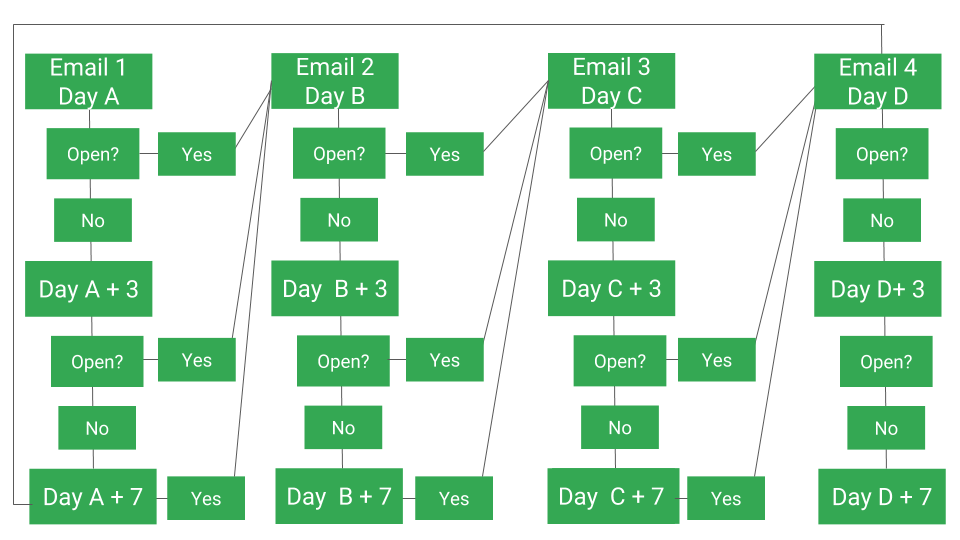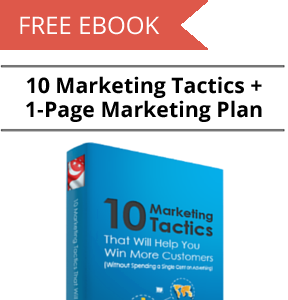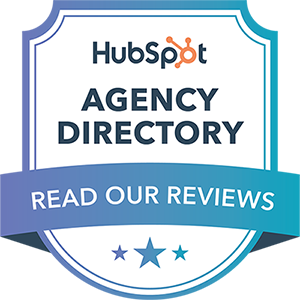![[8-Step Guide] How To Run PPC Campaigns For Higher Education](https://blog.clicktrue.biz/hs-fs/hubfs/%5B8-Step%20Guide%5D%20How%20To%20Run%20PPC%20Campaigns%20For%20Higher%20Education.png?width=5000&name=%5B8-Step%20Guide%5D%20How%20To%20Run%20PPC%20Campaigns%20For%20Higher%20Education.png)
In today's digital world where people spend more time online, PPC marketing is crucial in putting your school at the forefront of the digital landscape. Here are some key statistics that you need to know:
-
74% of brands say PPC is a huge driver for their business
-
Search ads increase brand awareness by as much as 80%
-
Adverts placed on the Google Display Network reach up to 90% of internet users
-
58% of millennials purchased something due to an online or social media ad
-
65% of B2B companies have acquired customers through LinkedIn ads
Pay per click advertising is the ideal student recruitment tool. It's the shortcut to getting highly targeted paid traffic, allowing you to attract students and boost enrolment. In fact, Google PPC ads can help your school reach the top of the search engine results page. Where your ads are positioned above organic search results which might take months or even years to build.
However, running PPC campaigns isn't as simple as creating ad copies and creatives then launching the campaign. To succeed, you need to have a PPC strategy that revolves around your business objectives in place. Discover the key steps in setting up a successful PPC campaign.
1. Set Your Goals & Objectives

First, you have to be clear about what you want.
Is your educational institution established recently? Are you aiming to gain footing in a new market? Do you have a new programme or course that you want people to be aware of? If so, brand awareness will be your business objective.
You might have other objectives like increasing the number of students enrolling in your university or college, boosting student engagement or even promoting the campus app.
The key is to be aware of what you're working towards. Pull in stakeholders and ensure that your goals and objectives align—that your work actually makes a positive impact on the school.
Consider setting a SMART goal that helps clarify your motivations and set a clear direction.
-
Specific
-
Measurable
-
Attainable
-
Relevant
-
Time-Bound
With this SMART goal, you'll better know what you want as well as the key metrics to measure performance.
At clickTRUE, we usually discuss this SMART goal with our clients and set a KPI that we need to achieve for each PPC campaign (but we'll set this based on past performance data for long-term clients). For example, if our client has an upcoming masterclass on 10 November 2021, we'll set a SMART goal like generating 100 leads by 10 November 2021 with cost per lead of $30. There will also be a daily monitoring process to ensure that we're on track to meet the target.
2. Determine Your Buyer Persona

Before we start diving into the PPC channels and media budget, you need to first determine your buyer persona.
Buyer personas are semi-fictional representations of your ideal customers based on data and research. They help you focus your time on qualified prospects, guide product development to suit the needs of your target customers, and align all work across your organisation (from marketing to sales to service).
Simply put, a buyer persona is a fictional person who embodies the characteristics of your best potential customers.
Here is some information that you should include
-
Demographics: Age, Gender, Country, Education, Income, Hobbies, Interests
-
Goals, Motivations
-
Challenges, Objections
Demographic information is easily attainable and most people are comfortable disclosing this. The difficult part is getting information about their goals, motivations, challenges and objections.
You can create a buyer persona by gathering relevant information, such as
-
Interview with your existing customers and prospects
-
CRM, Website and social media data
By drilling down into the data, you'll gain a deeper understanding and find out patterns, trends and characteristics that these customers and leads share in common.
In this case, you can hold interviews with stakeholders, such as student recruitment marketing managers, professors and prospective students.
Equipped with a fully fleshed out buyer persona, you'll get a better idea of the type of people you want to target. This will also help guide your PPC strategy, everything from marketing channels, ad copy to creative.
3. Choose The Right Marketing Channels

There are numerous marketing channels: email, social media, content, search engine, offline and more. However, we'll focus on online marketing today. Specifically, PPC.
PPC, which stands for pay per click, is where advertisers pay a fee each time their ad is clicked. PPC channels include Google, YouTube, Facebook, Instagram, LinkedIn, Bing, Twitter, Pinterest and more.
You need to know the strengths and weaknesses of each channel. Depending on your goals and target audience, some PPC ad networks might be more suitable for you.
Google Search
Google Search is a lower-funnel channel. Ads appear when people search certain terms on Google's search engine. There's a high search intent here. Hence, it's usually recommended to run campaigns with lower-funnel content offers. For example, a brochure download or 1-1 consultation campaign.
Google Display
Google Display and YouTube, on the other hand, are upper-funnel channels where they offer massive reach. Thus, these channels are great for building brand awareness. You can run campaigns to raise awareness for new programmes that the school is offering.
Facebook and Instagram
Facebook and Instagram are popular social media channels among millennials. If your programme targets young people, you can consider running ads here. For example, you can promote programmes and courses to young people on Facebook and Instagram as well as highlight the vibrant student life.
LinkedIn provides professional ad targeting. In other words, your targeting can be more refined. For instance, you can target people who have a bachelor's degree but don't have a master's degree. This is useful if you have specific admission requirements for the various programmes.
Multi-Channel Marketing
Bear in mind that these PPC channels are not mutually exclusive. You can always run PPC ads across several channels. This way, you're leveraging multiple channels and people can interact with your brand across multiple touchpoints.
One example would be running awareness campaigns on Google Display and YouTube, consideration campaigns on Facebook and LinkedIn and decision campaigns on Google Search.
4. Allocate The Right Budget

Determining the budget amount for each campaign depends on many factors like your goals, the PPC channels, your marketing budget, your target audience and many more. Some channels also have budget requirements:
-
LinkedIn: minimum daily budget is $10 while minimum lifetime budget for new, inactive campaigns is $100
Therefore, it is unwise to over-segment your campaigns. Meaning that you shouldn't spread your budget so thin across numerous campaigns
For instance, we have clients who want to set up a campaign for each country. There is nothing wrong with this and it is okay to launch country-specific campaigns.
You might choose to set it up this way because you want to highlight different messages. For example, you might emphasise the fully funded scholarships for international students while ads targeting the local country will highlight that the school is conveniently situated at an accessible central location.
However, due to budget constraints, the campaigns can't meet the required minimum budget. In this case, you'll either have to top up budget or group some countries together into 1 campaign.
5. Create The Right Content Offer

Next, you have to create a content offer that resonates with each stage of the buyer's journey.
The buyer's journey describes a buyer's path to purchase. Buyers don't wake up and decide to buy on a whim. They go through a process to become aware of, consider and evaluate, and decide to purchase a new product or service. There are 3 stages in this path to purchase.
-
Awareness Stage: The buyer becomes aware that they have a problem.
-
Consideration Stage: The buyer defines their problem and considers options to solve it.
-
Decision Stage: The buyer evaluates and decides on the right provider to administer the solution.
Let's say, Curtis stumbles upon a Facebook post that mentions how digital marketing skills are one of the most in-demand skills. This is when he realises that his current skill set is becoming obsolete and that he should stay relevant by upskilling himself. This is the awareness stage where Curtis realises he has a problem.
In the consideration stage, Curtis researches more about the various schools and marketing programmes. He is likely to click on a LinkedIn ad promoting a marketing programme brochure download.
In the decision stage, Curtis decides on the most suitable marketing programme. Nurturing emails that encourage him to schedule a 1-1 consultation with the admissions team will be welcomed.
It's recommended to do a content audit of your website and analyse the performance of your website content. Your website, the foundation for your brand, will house all your content. For example, you might notice that website visitors spend a long time on your blog post about 5 things to consider before pursuing a graduate degree. With such high interest, you can package it into a PDF and run an awareness or consideration campaign offering this free content offer. Even if you don't have a blog, you should have a FAQ page or section. And this FAQ itself can be a content offer too!
Your sales emails, monthly newsletters, social media posts are other great places to generate content offers. Also, do chat with your sales team, or your recruitment team and figure out the top questions that potential students ask. In addition, you can conduct interviews with your enrolled students and find out their key factors of consideration, the content they downloaded before deciding to apply for your school.
Here are some content offer ideas for educational institutions
-
Awareness: blog post, webinar
-
Consideration: programme brochure, info session, masterclass
-
Decision: 1-1 consultation
Notice how the buyer's journey is similar to the marketing funnel?
The purpose of top-of-the-funnel awareness content is to attract people who are far away from their purchase decision. They might be experiencing pain and they're looking for information to more clearly understand their problem. Your key role here is to educate these prospects.
The purpose of middle-of-the-funnel consideration content is to engage these leads where you nurture the relationship and build trust. They've clearly defined their problem and are researching solutions to their problem. Your key role here is to convince them why your solution is the best fit.
The purpose of bottom-of-the-funnel decision content is to delight these qualified leads. They've decided on a solution and are now shortlisting vendors to make the final purchase decision. Your key role here is to give them that final push. That could mean alleviating their fears and assuring them the benefits of your solution.
 Source: HubSpot
Source: HubSpot
6. Set Up Campaigns & Ads

Campaign Type: Tactical or Evergreen
Before you set up your campaigns, think about whether this is a tactical or evergreen campaign. The type of campaign will determine your budget setting.
Tactical campaigns are one-time campaigns, such as promoting a webinar or masterclass.
On the other hand, evergreen campaigns are relevant campaigns that run over a long period of time. Examples include programme brochure or 1-1 consultation.
For instance, at clickTRUE, we usually set a lifetime budget for tactical campaigns or events which have a hard deadline. For evergreen campaigns, we set a daily budget because there are many moving parts. Plus, if the campaigns perform well, we might choose to resume or extend the deadline.
Campaign Objective
As mentioned in Step 1, do determine your goals and objectives before setting up your campaigns.
Facebook and LinkedIn require you to set a campaign objective. This campaign objective should align with your goal as well as the ads that you want to run.
For example, if you want to run lead ads, you should set the lead generation objective. This will allow you to add forms to your ads.
Note that for Facebook and LinkedIn, you cannot change your campaign objective.
On the contrary, campaign goal is optional for Google. You can choose not to use a goal. Also, you can add or remove a goal at any time.
Keep The Requirements In Mind
On top of the budget requirements for each PPC channel, you'll have to keep other campaign and ad requirements in mind during setup.
For instance, we love Google Smart Display because it leverages machine learning. However, it requires conversion data. If the conversion data is not sufficient, Google can't accurately optimise for conversions.
LinkedIn also only allows 1 ad format for each campaign. Meaning that you have to set up separate campaigns for the various ad formats: single image, carousel and video.
Your marketing team that sets up the campaigns and ads needs to be aware of all these nuances so they can flag out issues in advance. For example, whether the budget is sufficient or if the target audience is too small.
7. Pair PPC With Other Marketing Channels

Just because you run PPC campaigns, it doesn't mean that you should implement PPC only.
At clickTRUE, we provide inbound marketing services. Hence, PPC is also tied to email marketing and CRM.
For example, when launching a download brochure lead ads campaign, we set up an email workflow automation so people who completed the form will receive a download brochure email in their inbox. At the same time, we also tag them as interested in that specific programme and add them into the nurturing email drip.
Likewise, you need to think about how you want to nurture the leads you gained from PPC campaigns and set up the relevant automation so it saves time and manpower.
Note that higher education is different from business-to-consumer or fast-moving consumer goods industries where products are affordable, require low commitment and have short sales cycle. Higher education is the opposite of this: costly courses, high commitment and long sales cycle. Thus, nurturing prospective students is the key to student recruitment!
8. Continuously Improve By Analysing & Optimising

To continuously improve the performance of your PPC campaigns, you need an ongoing process to analyse and optimise your campaigns.
First, you need to identify the key metrics to monitor. Depending on your goal, some key metrics that you can monitor are Conversion Rate, Acquisition Cost and Lead To Student Ratio.
Next, determine the metric that needs improvement. The tactics to improve cost per click and cost per lead are different.
It'll be good if you have an arsenal of strategies and tactics for various problems and scenarios. This way, you can implement them immediately when you encounter them.
Also, it's strongly recommended that you have a CRM system in place. CRM refers to Customer Relationship Management. A CRM system provides a wealth of data so you know the impact and results of your PPC efforts.
This is the reason we encourage our clients to use HubSpot. HubSpot allows you to see the full user journey from first click to enrolment. Equipped with this single source of truth, our education clients can better see which PPC channels, ad copies, banners and targeting work as well as how the multi-channel marketing strategy drives student recruitment. You'll be able to tell which PPC ad converted potential students, which website pages they visited, which programme brochures they downloaded and whether they contacted your course consultants.
With HubSpot, you can drill down into a contact's activity timeline and see all interactions he or she had with your company. In this case, you'll be able to see how a potential student saw your ad on Facebook, filled up the lead ad form and finally, downloaded your programme brochure. You can then choose to shift more budget to best performing campaigns.
Supercharge Your PPC Marketing Today
There are many steps, decisions and efforts involved in setting up a PPC campaign. Every part, no matter how small, is crucial.
To maximise return on investment from your PPC marketing efforts, do ensure that you have a PPC strategist in your team. Someone who has the expertise in running PPC campaigns for the higher education industry and can flag out potential problems and improvements in advance.
As data-driven marketing consultants who have run PPC campaigns for numerous higher education clients, we've compiled the CPC, CPL and Conversion Rate for Higher Education in the ASEAN region. We hope this can help you make strategic PPC budget decisions. Fill up the form below to download this exclusive report.


 hello@clicktrue.biz
hello@clicktrue.biz
 info.my@clicktrue.biz
info.my@clicktrue.biz info.th@clicktrue.biz
info.th@clicktrue.biz info.id@clicktrue.biz
info.id@clicktrue.biz info.vn@clicktrue.biz
info.vn@clicktrue.biz




